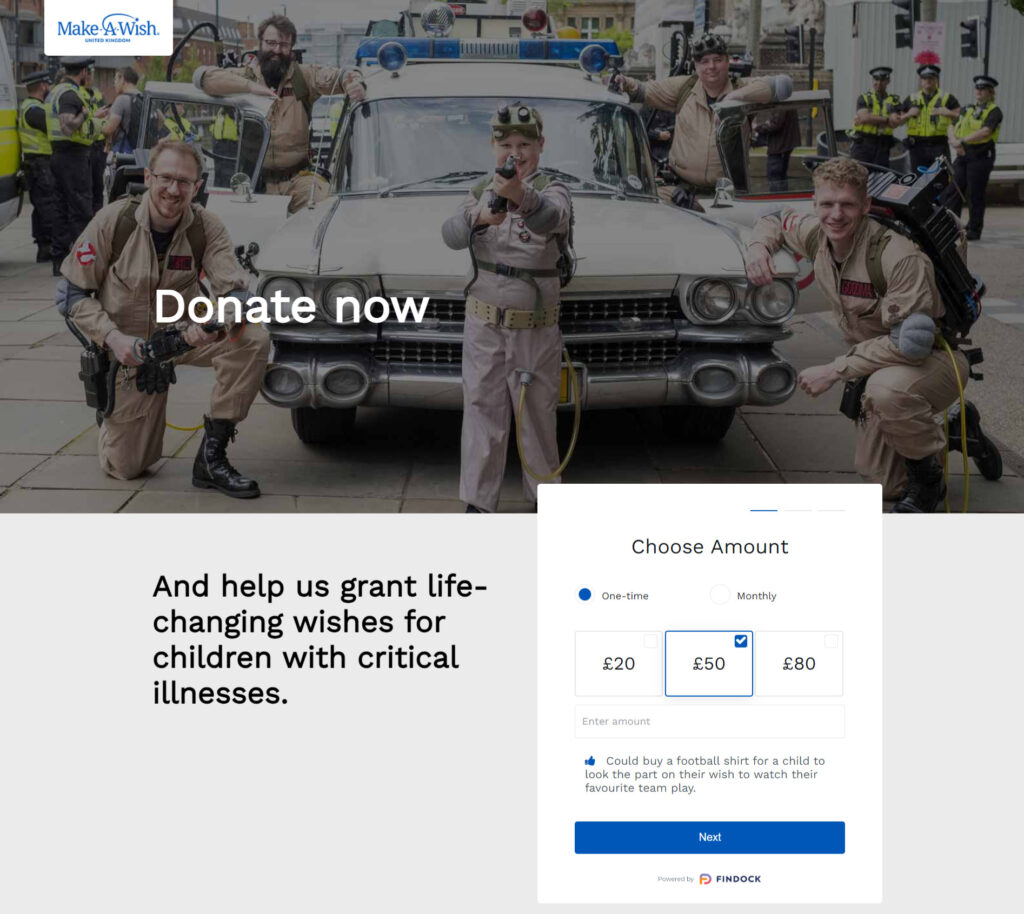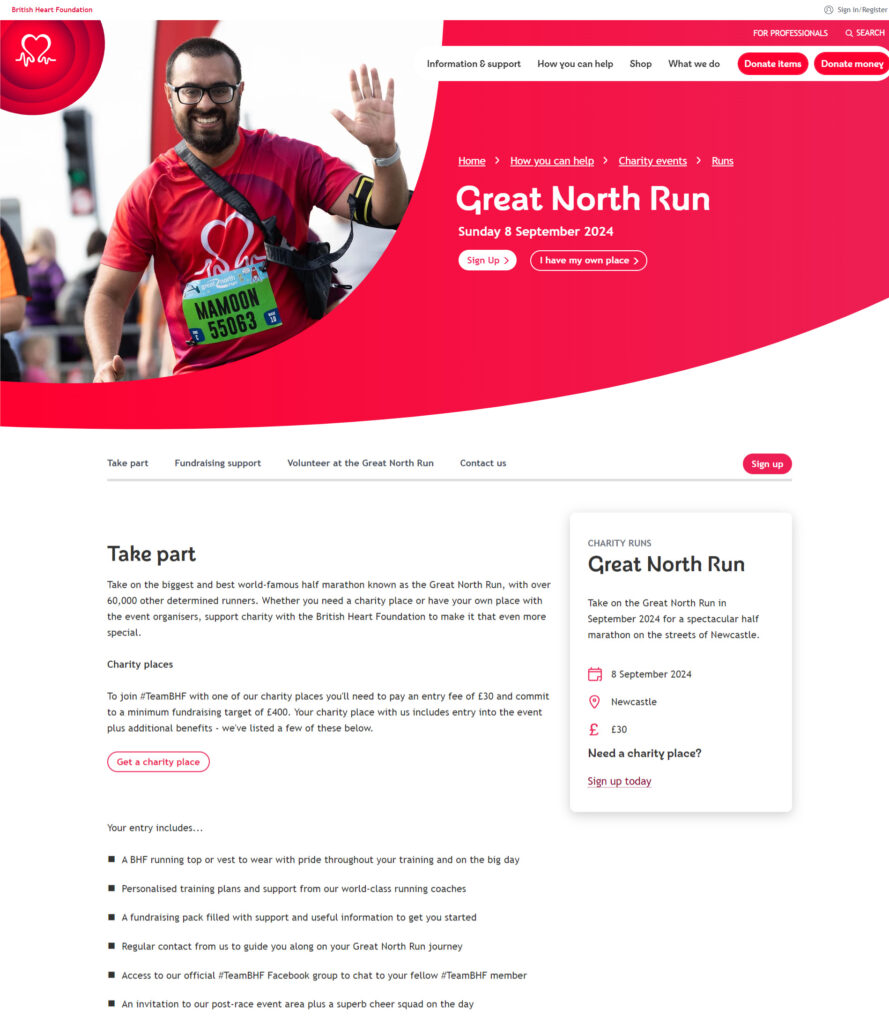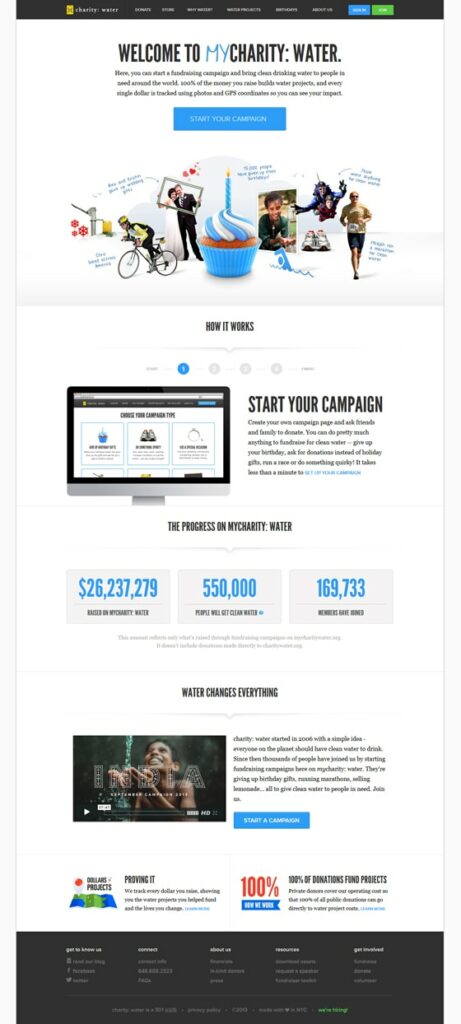The ultimate non-profit marketing strategy guide

Introduction
What is non-profit marketing?
The objective of non-profit marketing will vary depending on the type of organization you are. It is generally considered that there are five types of non-profit organizations:
- Charitable
- Religious and church
- Worker’s association
- Private foundation
- Political
Despite this covering a wide range of causes, non-profit marketing is, at its heart, all about attracting new support and making a difference. It’s about sharing your organization’s story, attracting support, and inspiring fundraising.
What are the benefits of non-profit marketing?
1. Raise awareness
2. Increase funding
3. Attract volunteers
4. Build a strong and supportive community
5. Improve credibility
6. Expand outreach
7. Boost engagement
8. Measure impact
The non-profit marketing landscape
While there are some similarities between non-profit and for-profit companies in how they approach their marketing, the differences are significant.
For example, it is far more difficult to market an idea or a cause than it is to sell a physical product. On the other hand, non-profits have a clear and well-defined mission, something that B2C and B2B brands struggle to create.
The target audience of a non-profit is vast and varied. You’re not simply trying to reach customers and potential customers; instead, your diverse audience includes donors, volunteers, partners, and service recipients. That makes crafting unique customer journeys a complex and demanding task.
Challenges facing non-profit marketers
As a non-profit marketer, you often have to work with tight budgets and small teams. This makes it difficult to allocate resources and appropriately fund marketing activity.
The pace with which marketing technology is advancing can feel daunting. With limited budgets and resources, it can be hard for non-profit marketers to stay up-to-date with the latest tools and trends, as well as provide the necessary training across the team.
There are literally millions of non-profit organizations in the world and the dynamic nature of the sector means it’s constantly changing. As a result of this intense competition for public attention, it can be difficult to differentiate your organization and gain visibility.
Non-profit marketing is a delicate balancing act between short-term goals like fundraising and recruiting volunteers and achieving long-term initiatives that make an impact.
Non-profit marketers are vying for attention on the same digital channels as for-profit companies. Breaking through the noise created by influencers and well-resourced B2C brands is becoming increasingly challenging for non-profit organizations.
Successful non-profit marketing relies on the collection and analysis of customer data. But, privacy concerns and evolving data regulations such as GDPR and CCPR, mean that non-profit marketers have to navigate the complexities of data hygiene, management, and compliance. This can be particularly challenging for non-profits that were established before the rise in digital marketing.
Demonstrating the effectiveness of your non-profit marketing efforts and measuring the real-life impact of your campaigns can be particularly difficult for a non-profit marketer, especially when trying to attribute success to specific initiatives or evaluate long-term results.
To successfully navigate the challenges facing you today, you need to adopt a comprehensive and targeted approach to your non-profit marketing. The stage of this is to create a strong marketing strategy. Thankfully, you can do this in six simple steps.
Step 1: Define your goals
Do you want to increase the number of volunteers? Convert one-time donors into regular supporters? Increase event attendance? It’s essential you set goals that are relevant, measurable, and timely.
Example goals include:
- Increase donor acquisition: Acquiring new donors is crucial for sustained growth and the long-term success of your non-profit organization.
- Improve donor retention: Retaining existing donors is both more cost-effective and an opportunity for relationship-building and generating larger donations over time.
- Expand digital channels: The shift towards digital channels has increased the importance of leveraging online marketing tactics, including email, social media, and websites, to engage and maintain relationships with donors.
- Adopt personalization: As the non-profit market becomes more saturated, personalization has emerged as a vital tactic to help non-profits stand out, enhance relationships, and ultimately increase donations.
- Make more data-driven decision-making: The effective use of data allows you to make informed marketing decisions by targeting messages, measuring the impact of your campaigns, and adjusting your strategies accordingly.
Step 2: Understand your audience
To meet your goals, you need to understand what motivates your audience. What do they want or need from the relationship? Using the data you have on hand; you need to learn as much as possible about your audiences to build solid personas and well-planned customer journeys.
Step 3: Craft your message
With a clear goal and personas based on supporter data, it’s time to craft your message. Make sure it is clear and focused, ties into your overall mission, and can be acted upon.
Step 4: Identify your marketing channels
Audiences are spread across an ever-expanding network of channels. As you build your non-profit marketing strategy, you need to clearly define what each channel will be used for. Ultimately, this will help you create the right kind of content for each and highlight where you need to focus your resources.
Step 5: Analyze your results
Measuring your marketing results is vital to ensure you’re achieving your goals. Analyzing results will help you identify risks, opportunities, and changes in customer behavior. In turn, this will allow you to optimize your non-profit marketing efforts to ensure you continue to hit your goals.
Step 6: Rinse and repeat
Turn insights into action to continuously optimize and improve your non-profit marketing strategy.
To improve your reach, engage your audience, and drive support and donations, you need to utilize the tech at your fingertips. For ultimate success, you need tech that plays nicely with others. Dotdigital’s customer experience and data platform offers a range of marketing tools and channels in a single, integrated, all-in-one platform.
By leveraging your tech effectively, you can improve donor engagement, increase donations, and streamline your non-profit marketing efforts.
Email marketing for non-profit
Email marketing enables you to deliver personalized content, straight to a subscriber’s inbox. Using email marketing to engage donors, volunteers, and stakeholders, you can foster strong relationships, increase awareness, and inspire action, donations, and volunteering.
The benefits of non-profit email marketing
- Cost-effectiveness: Email marketing is one of the most cost-efficient channels available to marketers. On average, email marketing generates $36 for every $1 spent.
- Targeted communication: Easily segment your audience to ensure you’re delivering relevant and personalized messages that engage and convert subscribers.
- Advanced analytics: Measure campaign performance, track links, and clicks, and make the necessary tweaks to email marketing campaigns to improve your results on the go.
- Flexibility: Email marketing is the most versatile and flexible channel you have. It can be used to raise awareness, provide updates, announce events, thank supporters, and so much more. What’s more, using automation tools, email can make up a central part of your cross-channel marketing strategy.
Email marketing best practice for non-profits
Use tools like on-site popovers and Facebook lead ads to grow your marketing lists and sync data directly to Dotdigital. Implementing double opt-in ensures your new sign-up are active and engaged users of the email account.
Also, use this opportunity to collect additional zero-party data like first name, phone numbers, and location. This will help you deliver personalized messages throughout the journey.
The days of batch-and-blast email marketing are long gone. To create an audience of engaged subscribers, you must provide them with relevant messages. As a non-profit marketer segmentation is more important to you than any other marketer.
With a diverse audience of donors, volunteers, partners, and service users, building segments ensures the right message lands in the right inbox.
Engaging subject lines drive email recipients to open. Luckily, Dotdigital’s writing assistant powered by WinstonAI is on hand to help with every send, suggesting subject lines based on your email copy. Writing subject lines has never been so simple.
While Apple’s MPP is making it harder to determine if and when opens are happening, you should prepare for every device. That means designing responsive emails that render correctly regardless of whether they’re opened on a phone or desktop.
Emotional connections are what drive brand loyalty and it’s vital for you to share impactful stories that demonstrate your non-profit’s value. To keep stakeholders emotionally connected with your mission, you need to tell your story, whilst connecting with readers personally.
Using personalization tools, you can demonstrate the impact donations make or thank individuals for the hours spent volunteering.
Every email has a purpose. You want to drive donation, encourage involvement in fundraising activities, drive event attendance, and help people access service – your mission is endless. Don’t overload your email marketing with multiple CTAS, keep the journey simple to get optimal results.
Testing is a marketer’s best friend. Whether you’re testing subject lines, layouts, or CTAs, you can monitor campaign performance and refine your strategy. What works one week, might not the next, so it’s important to test every send if you’re determined to smash your non-profit marketing goals.
Data privacy and security are a huge concern for customers and marketers alike. GDPR, CCPA, and CAN-SPAM are being joined by more and more regulations designed to protect data privacy. Staying up-to-date and compliant is fundamental.
Landing pages and forms
Landing pages and forms foster engagement, encourage conversions, and capture vital information that helps shape successful non-profit marketing campaigns. As a non-profit marketer, they should be an essential component of your marketing strategy.
The benefits of using landing pages and forms
- Effortless customization: Make sure your landing pages and forms work for your purpose. Customize pages and forms easily and create engaging forms using multiple field types and layouts. Plus, just like email, you can test elements to optimize performance.
- Enhanced experience: Create a unique and seamless experience for the user by adding personalization to your pages and forms. Ensure users are seeing relevant content and questions that appeal, engage, and inspire action.
- Promote conversions: Landing pages eliminate distractions with a singular goal, while forms make the submission process simple and fast, both of which maximize the chances of conversion.
- Data capture: Forms allow you to capture essential data on your supporters, such as their contact information, interests, and preferences. You can use this data to understand your audience better and create more relevant, targeted, and engaging marketing messages. This, in turn, nurtures longer-lasting relationships and encourages stronger support.
- SEO-friendly: A well-designed landing page can lead to multiple SEO benefits such as higher search engine rankings, increased organic traffic, and better online visibility.
How to use landing pages and forms in a non-profit marketing campaign
Create responsive, easy-to-use forms to gather valuable information about your supporters and their preferences.

Utilize your tools to manage registration forms and landing pages for events.

Develop dedicated landing pages for fundraising campaigns, making it easy for supporters to donate and share information.

Marketing automation for non-profit marketers
Marketing automation software automates repetitive tasks, simplifies cross-channel communication, and improves the efficiency of your marketing efforts. This allows you to better engage, nurture, and manage relationships with your donors, supporters, and volunteers.
Key benefits of marketing automation for non-profits
- Save time and resources: By automating repetitive tasks, you can free up your time for more strategic tasks like content creation, networking, or event planning.
- Improved donor engagement: Marketing automation makes it easier for you to deliver personalized content, building stronger connections with both current and potential supporters.
- Campaign performance tracking: Intelligent campaign reporting helps you optimize and measure the performance of automated marketing campaigns, empowering you to make data-driven decisions.
- Improved customer journeys: Automation allows you to streamline your marketing communications, such as donor follow-up, event registration, and implement cross-channel marketing tactics.
- Increased revenue: The timely nature of behavioral triggered marketing can help drive conversions, increasing results such as donor retention and fundraising, ultimately growing your non-profit organization.
Essential automation programs for non-profit marketing teams
Triggered when a new donor, supporter, or volunteer signs up for your email or SMS marketing, this series should include:
- A thank you expressing gratitude for their support
- An introduction to your organization and mission
- Details on the impact their support will have
- Links to connect on additional channels such as social media
You should have a retention campaign for each of your key stakeholders such as donors, volunteers, service users, and corporate partners. They encourage continued engagement and donations by targeting lapsed or lapsing donors with a series of personalized emails showcasing your organization’s accomplishments and renewing their support.
Events are a great tool for fundraising, engaging volunteers, and achieving your long-term goals. Marketing automation can help streamline and improve the overall experience.
- Event invitations: automatically send targeted and segmented invitations via email or SMS for fundraising events, webinars, and more.
- Event reminders: schedule pre-event reminders via email, SMS, WhatsApp, or push notifications to maximize attendance.
- Post-event follow-up: Share event highlights, thank attendees, and encourage further engagement with pre-planned communications.
Never miss an opportunity to connect with customers by triggering your programs according to how your customers interact with your non-profit marketing efforts. You can target potential donors who visited your donation page but didn’t complete the process with an abandoned browse campaign, or provide follow-up after service users download resources from your website.
Schedule personalized messages to be delivered to your audience on their birthdays, anniversaries, or during the holidays. This will add a delightful human touch to your marketing efforts and nurture relationships.
Enhance donor engagement and boost revenue
Segmentation and personalization
Segmentation and personalization are essential tools for non-profit marketers. They can significantly improve outreach, fundraising, and stakeholder engagement while building a strong, loyal community.
The benefits of segmentation and personalization
- Effective targeting: By segmenting your audience, you can tailor your non-profit marketing to their specific needs and preferences. This ensures that your messages resonate with your audience, increasing the likelihood of engagement and participation.
- Efficient use of resources: When you’re working with limited budgets and resources, you need to use all the tools you have to maximize your impact. Segmentation and personalization allow you to target customers with messages about the missions and objectives that matter most to them. This leads to a more efficient allocation of marketing budgets and results in a higher ROI.
- Improved fundraising: Personalized marketing boosts donor engagement and improves the overall experience. By understanding the needs and preferences of different segments, you can optimize campaigns and generate more revenue for your cause.
- Stronger customer relationships: Personalization helps build stronger relationships with your supporters. It makes supporters feel valued and appreciated, leading to increased loyalty and long-term commitment to your cause.
- More effective communications: Personalized messages and segmented campaigns can result in more meaningful conversations with your audience. It can lead to increased response rates and higher engagement, ultimately improving your marketing results.
SMS marketing for non-profit marketers
SMS is a vital channel for non-profit marketing. The channel can significantly boost outreach and engagement due to its adaptability, high open rates, real-time updates, and cost-effectiveness.
The benefits of SMS marketing of non-profit marketers
1. Unparalleled reach
SMS allows you to target your broad and diverse audience because it doesn’t rely on internet access. Most mobile phone users, even those with limited or no internet connectivity, can receive SMS messages, making it highly accessible for everyone.
2. High open rates
SMS enjoys an extremely high open rate of about 98%, which means you can almost guarantee audiences with view your content. Engagement rates with SMS are also considerably higher compared to other channels, greatly improving the chances of hitting your fundraising or brand awareness goals.
3. Immediate and real-time communication
SMS delivery is practically instantaneous. This is especially important for non-profits who need to connect with audiences in real-time. By utilizing the immediacy of the channel, you can share time-sensitive information such as emergency relief efforts, and ensure you get a prompt response from your audience.
4. Cost-effective and affordable
Like email, SMS is low-cost and has an unbeatable ROI. When you have to operate on a limited budget, SMS is the perfect channel as it is an affordable option that maximizes your impact, without financially straining your resources.
5. Personalized messaging
SMS marketing, like email, is great for delivering personalized messages to your audience. You can segment and target your audience according to preferences or geographical location to increase the likelihood of positive engagement.
6. Easy to integrate with other channels
SMS is a channel that works perfectly with the other channels in your marketing stack. It can be easily integrated with email, social media, and more. This will help you create a cohesive and comprehensive non-profit marketing strategy that will improve your overall effectiveness.

Driving impact with cross-channel fundraising
Discover how Action for Children combined email and SMS to drive fundraising efforts.
Core SMS campaigns for non-profit marketers
Targeted SMS fundraising campaigns like text-to-give allow you to drive donations through simple, direct text messages. For ultimate success, include a simple and secure donation process, and update supporters on the progress or results of your campaign to encourage involvement.
Use SMS marketing to keep your supporters informed about upcoming events, such as webinars, workshops, and fundraisers. Through sharing key details and registration links via SMS you can drive attendance. You can also use marketing automation tools to schedule reminders, deadlines, and opportunities to keep supporters connected and engaged.
Reach out to your potential volunteers via SMS with your latest volunteer opportunities or events. Share details about the roles and responsibilities, along with how they can register or show interest, while also sending current volunteers updates and schedules. This can help develop a more hands-on and committed audience, driving additional impact for your non-profit organization.
Share real-time updates with your stakeholders during emergencies, fundraising campaigns, or ongoing projects. You can keep supporters informed of progress or urgent needs, encouraging further engagement down the road.
Send ‘thank you’ messages to donors, volunteers, and supporters to show your appreciation for their contributions. This can help nurture long-term relationships and foster loyalty to your non-profit organization.
Encourage supporters to take action in advocacy campaigns (e.g., by signing a petition or contacting a legislator), and provide detailed instructions on how to participate via concise and engaging text messages.
Send personalized messages to your donors on anniversaries, birthdays, or milestones to build stronger emotional connections and maintain long-term relationships with your organization.
Encourage your supporters or service users to share their feedback on events, campaigns, or other activities through SMS-based surveys or use the channel to distribute a link to an online survey.
Supercharge your donor outreach
Reporting and analytics for non-profit organizations
As a non-profit marketer, making the most of your limited budget and resources is crucial. Tapping into powerful reporting and analytics tools can help non-profit marketers streamline and optimize their digital marketing.
Using advanced analytics and reporting tools
Email analytics
Email reporting and analytics give you information about the performance of your email marketing campaigns. You can use this information to:
- Identify trends in the performance of your email marketing campaigns
- Ensure that your campaigns are performing as expected
- Pinpoint weaknesses and opportunities to optimize campaign performance
Email dashboards vs. email reports
Email dashboards tell a collective story of all your email marketing campaigns by adding together all your statistics. An email report tells the story of a single email campaign by displaying an instant overview of your key metrics.
Top email marketing metrics
- Delivery report: discover statistics about delivered, bounced, and skipped emails.
- Engagements: this includes data about opens, unique opens, non-opens, and social shares.
- Open map: a heat map showing the areas of the world where your email campaign was last opened.
- Top links and clicks: discover the most popular links in your campaign, clicks, unique clicks, and click-to-open rates.
- Split tests: if you run a test on your email marketing campaign, this section will display details about your winning and losing split tests.
SMS reporting
SMS campaign reports let you keep track of what’s working well and where you may need to make changes to improve your marketing results.
SMS reports display:
- Last sent
- Campaign name
- Click-to-delivered rate
- Conversion rate
- Direct orders
- Assisted orders
- Last modified
- Revenue
- Assisted revenue
- Total segments
- Total clicks
- Total delivered
- Total sent
- Type
- Unique clickers
Program reports
Program reports can be split into three sections: program information, key program metrics, and a detailed view.
Program information:
- Program name: the name of your program, e.g., welcome
- Program ID: the ID number of your program
- Last run date: the data and time your program last ran
- Date modified: the date your program was last modified
- Last modified by: the user who last made changes to your program
Key program metrics:
- Campaign opens: the sum of all opens of all campaigns in your program.
- Campaign clicks: the sum of all unique clicks of all campaigns in your program.
- Revenue: the total revenue generated within a set date range.
Detailed view:
You can get a more detailed view of your key program metrics by choosing between two chart views:
- Trend: the trend chart shows the incremental comparative rise and fall across your chosen date range.
- Cumulative: the cumulative view shows increases be successive additions across your chosen date range.
Program analytics
Program analytics lets you quickly view your automation data using a visual representation of your program. You can look at an entire program, from start to finish, and analyze the data associated with each program node. Program analytics consist of different sets of data:
- Start nodes: start nodes show you the sum of all your enrolled contacts and the enrollment conditions used.
- Campaign nodes: campaign nodes show you data for specific campaigns used in your program:
- Emails sent
- Opens
- Clicks
- Revenue
- Decision nodes: decision nodes display the sum and percentage of contacts that chose a decision path.
- Action nodes: this displays the sum of all contacts that interacted with the program node and the action taken.
Revenue attribution
Revenue attribution lets you see how your campaigns are performing and how much revenue they are generating. There are two methods you can adopt to track revenue generated by your campaigns: direct tracking and advanced revenue attribution.
- Direct tracking: direct tracking attributes revenue for email clicks within a one-hour window.
- Advanced revenue attribution: advanced revenue attribution infers revenue for email and SMS campaign clicks that lead to a purchase within a specified conversion window.
Artificial intelligence
Artificial intelligence (AI) is revolutionizing marketing. As a non-profit marketer handling high workloads and limited resources, AI is about to become your best friend. Integrating it into your marketing strategy today will help you get ahead of the competition tomorrow.
The benefits of AI
1. Save time and resources
AI automates repetitive tasks such as segmentation, email personalization, and scheduling. This will free up your time to focus on more strategic tasks.
2. Increase engagement
AI analyzes vast amounts of customer data and learns from their behavior, making it easier and faster for you to create tailored content. Ultimately, you will enjoy higher open rates and conversions.
3. Unlock valuable insights
By processing large volumes of data, AI can quickly reveal patterns and trends that will guide you in making data-driven decisions.
4. Improve targeting
AI-powered tools can help you identify audience segments more accurately, ensuring the right messages reach the right people at the right time.
WinstonAI™ by Dotdigital for non-profit marketing
As a non-profit marketer, you’re often being asked to make something amazing out of nothing. However, creating a viral campaign is not as simple as those outside of the marketing industry like to believe. That’s why Dotdigital created WinstonAI, our industry-leading marketing intelligence engine.
WinstonAI has ever-growing capabilities to help you get the most out of your marketing.
Generative AI and writing assistance
By analyzing the content of your previous subject lines, WinstonAI gives you feedback on the engagement level of your subject line and generates alternatives to save you time and help inspire your next campaign.
As well as offering up alternative subject lines, our campaign assistant powered by WinstonAI provides you with feedback to improve your content, including tone evaluation and out-of-the-box suggestions to include in your next email campaign.
WinstonAI’s grammar check is available for email, SMS, landing pages and forms, and eliminates the need for time-consuming manual proofing tasks shared throughout your team.
After spending a great deal of time generating exciting and engaging email content, you can quickly reuse content by converting it into an SMS message. With one simple click, WinstonAI can create a concise text message version of your email to send to users who prefer receiving content via SMS.
AI-powered insights and analytics
Customer predictions can help you anticipate how your audience will act in the future. This helps you prepare your marketing strategies to keep customers engaged throughout their journey with you.
eRFM is a customer behavioral model that helps you understand the potential of your customers by creating personas by combining engagement scores with RFM (recency, frequency, monetary) scores.
Single customer view (SCV) allows you to deep dive into a customer’s profile. When you find your ideal customer profile – be that donor, volunteer, service user, or partner – you can generate a segment populated with customers who look and act just like them.
AI-optimized marketing campaigns
Make sure your emails arrive in inboxes at the time most convenient for the reader. Send time optimization (STO) is an AI-powered feature that has been around for a while, but using it is guaranteed to improve engagement levels.
Your sender reputation is calculated based on the quality of data you upload and the level of engagement your campaigns inspire. The better your data is, the greater your campaigns will perform, and the higher your sender reputation will be.
Dotdigital’s data watchdog is a powerful and intelligent analysis tool that protects your sender reputation and delivery rates. No email address makes it into the system without being checked by the data watchdog first. Powered by WinstonAI, our data watchdog predicts, detects, and prevents email abuse.
Contacts in your mailing lists may use security products to keep their inboxes secure. They can open email marketing campaigns and interact with links which can lead to skewed marketing results. WinstonAI allows you to improve the accuracy of your results by filtering out any activity from non-humans.
Integrations and data management for non-profit marketing teams
Integrations play a crucial role in improving the efficiency of your marketing efforts. Especially when you have multiple goals and a spiraling tech stack, to create the targeted and personalized experiences that deliver results, you need to be able to manage your data and tech from one single, centralized hub.
The benefits of integrations and data management
The hardest part of non-profit marketing is keeping up with the changes in the industry. Tools like marketing automation and AI have shaken up the industry over time. But every time you embrace a new tool or feature, your martech stack spirals.
What’s more, as a non-profit marketer, you’re facing additional challenges, such as differing CRM systems across departments. Ensuring you have a marketing platform that integrates and manages data flows seamlessly will provide a wide range of benefits.
1. Streamlined data management
Data is essential for marketing success. You need it to create unique customer experiences that meet supporter’s needs and expectations. Integrating your marketing stack ensures data flows seamlessly between platforms, allowing you to consolidate and manage supporter information from various sources in one central platform.
2. Time and resource efficiency
3. Cross-team collaboration
By integrating your marketing tools, you can promote better cross-team collaboration as you can all access the same data and insights. This will help foster a more efficient and well-coordinated approach to achieving the goals, targets, and overall mission of your non-profit organization.
4. Improved campaign results
You can track and analyze the performance of campaigns across your channels in a centralized data hub, allowing you to optimize campaigns and provide consistent and seamless experiences for your supporters.
5. Enhanced personalization
6. Scalability
Conclusion
Utilizing the power of your marketing tech is essential to create campaigns and experiences that drive your organization to achieve its goals. Harnessing the power of storytelling, segmenting your audience, and utilizing cross-channel marketing automation will help you spread your mission, garner support, and create a long-lasting impact.
At the same time, integrations and seamless data management play a vital role in streamlining your non-profit marketing efforts, empowering you and your team to focus on creating personalized and engaging experiences for your supporters and stakeholders.
AI-powered solutions like Dotdigital’s CXDP are revolutionizing non-profit marketing. Uncover valuable insights, optimize campaigns, and increase engagement with tools already trusted widely throughout the non-profit sector.
By applying the strategies, tools, and advice covered in this guide, you will be well on your way to creating a stronger community of supporters to help you achieve your ultimate goal.